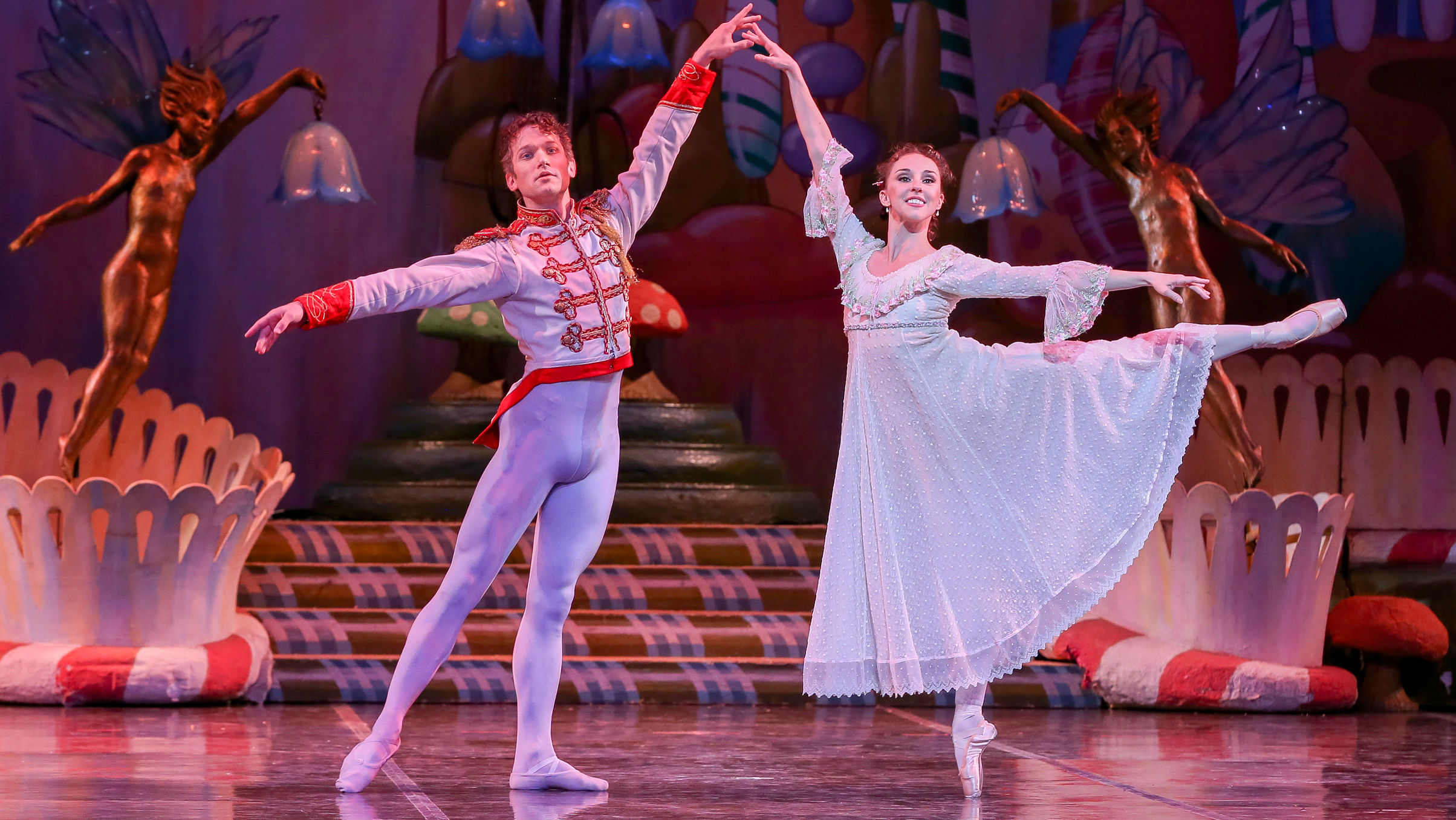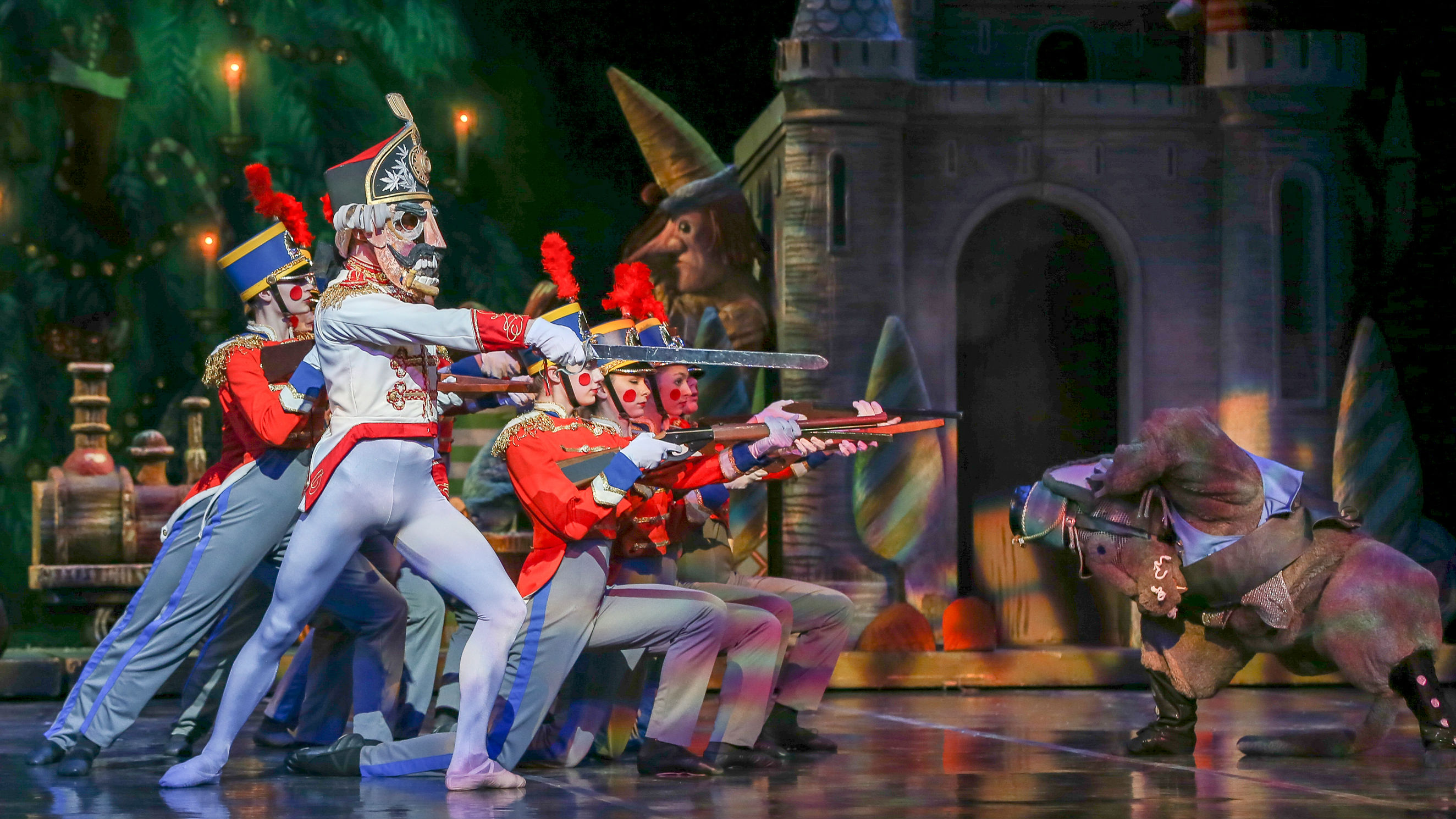
set to Pyotr Ilyich Tchaikovsky's musical score is filled with fantastical characters, childlike whimsy and Christmas magic.
But with 26 shows scheduled this season, “The Nutcracker” is more than just fantasies and fairies for the Colorado Ballet.
The production is based on a dark, 19th Century fairy tale by German author E.T.A. Hoffman. When it premiered in Russia in December 1892, many considered the ballet flawed and unsophisticated. It made its way to America in the 1930s via the famous touring ballet ensemble the Ballet Russe de Monte Carlo.
In 1944, the San Francisco Ballet debuted the first major domestic production with choreography by American dance impresario William Christensen. The biggest game-changer for the production in the United States was in 1954 with the premiere of world-famous choreographer George Balanchine’s version for the New York City Ballet. The production featured children and a magically growing Christmas tree.
The New York City Ballet is celebrating the 60th anniversary of Balanchine’s version of “The Nutcracker” this holiday season with 47 performances.
A test of endurance
Indeed, it takes physical, mental and logistical stamina to make the Christmas ballet look effortless.
“When you start that first show of ‘Nutcracker’ and you know you have 26, 27 shows, you do feel like you have to steel yourself up for a long haul,” Colorado Ballet principal dancer Sharon Wehner says.
She may look at ease being the Sugarplum Fairy, balancing on the tips of her pointe shoes. But the ballerina says “The Nutcracker” is grueling on her body, even though she’s been performing the ballet more than 20 years.
Dancing leading roles also takes a toll on her shoes: Wehner expects to go through at least ten pairs during the show’s month-long run at the Ellie Caulkins Opera House in Denver.
Colorado Ballet artistic director Gil Boggs also knows first-hand what it takes to get through a long “Nutcracker” season.
“In my career, I’ve done the Nutcracker Prince,” Boggs says. “I’ve done the Cavalier. I’ve done Russian. I’ve done Spanish. I’ve been a mouse.”
It’s a lot of dancing.
Sometimes corps de ballet members perform multiple roles in a single show. The performers also often dance two shows each day on weekends. Adding to the challenge: About 100 pounds of theatrical fake snow drops on the Ellie Caulkins Opera House stage during the Snow Scene in each Colorado Ballet performance, making its surface slick for the dancing snowflakes.
With this physically taxing schedule, dancers have to ensure they get enough sleep and eat well. Every dancer has his or her own trick -- such as including more protein in their diets or using a tennis ball to massage sore muscles.
Wehner relies on nightly ice baths for her feet.
“There’s a lot more that goes into preparing and warming up and cooling down,” Wehner says. “Much more that goes into that than actually being onstage.”
A cast, crew of hundreds
It takes hundreds of people to mount the show on the Ellie Caulkins stage each night. And there are approximately 350 costumes in the Colorado Ballet’s production.
Wehner is one of 52 professional dancers performing alongside 64 students from the Colorado Ballet Academy, 40 Colorado Ballet Orchestra musicians, two opera singers and a 40-voice choir.
Backstage, there is just as much activity.
Mounting the production requires a team of 30 crew members, led by Colorado Ballet stage manager Vitali Prokhnitski.
“It is a pretty busy show,” Prokhnitski says. “Everyone has something to do during the show and it has to happen at a specific time.”
The team executes most set and lighting changes in as little as five seconds.
The financial reward
It’s an exhausting undertaking each year. But Boggs says the economic payoff is significant.
In 2013, the Colorado Ballet’s “Nutcracker” run brought in $2.39 million, accounting for roughly a third of the company’s overall budget. Boggs anticipates surpassing that number this year.
“We were sold out last weekend and we’re sold out for the weekend coming,” Boggs says. “So from a financial standpoint it’s very important.”
Despite the hefty profits, putting on the same show night-after-night, year-after-year causes Nutcracker fatigue for many companies throughout the country.
Jennifer Fischer, an associate professor of dance history and theory at the University of California Irvine, calls this weariness “Nut bashing.”
“That’s only skin deep, that complaint about ‘The Nutcracker,’” Fischer says. “Yes, they must repeat it. So is ‘Hamlet’ repeated, and the best musicals on Broadway, eight times a week.”
The intangible reward

Corps de ballet member Emily Dixon does this by focusing on the fans.
“Every audience is a brand new audience and they deserve a brand new show,” Dixon says. “So it’s about them. It’s about the audience. That’s why we do this.”
Following the final performance on Dec. 27, the Colorado Ballet will take a break, giving everyone a chance to recharge before the next shows in the new year.









